As the good spell of weather continues, some farmers on drier ground have reported that they were able to hit their target of having 60% of the farm grazed and closed by last weekend.
Others on free-draining ground who got the worst of the rainfall in October will miss the target by a week or more, though in truth they are thankful to be grazing at all.
This 60% figure is important in that it will form the bulk of our animals’ diet in the springtime.
On a farm operating a proper autumn rotation planner and pushing for early turnout in the springtime, two-thirds of their spring grass is now grown. While the weather was atrocious for much of October, growth remained largely on par with 10-year averages.
Grass growth on the farms left grazing and measuring this week was 19kg DM/ha/day. However, as the first countrywide frosts of the year hit, growth will fall off a cliff.
Housing
I have yet to talk to a farmer who wasn’t forced to house significant numbers of stock during October, but many have been able to turn some animals back out in recent weeks.
From now on, it is a case of keeping animals out for as long as possible on dry farms and potentially turning some lighter stock back out on heavy farms that have all of their animals housed. Back to grass
However, if turning young stock back to grass, we should be supplementing with concentrates at similar rates to what they were receiving indoors.
If this is unrealistic or seems like hassle, weaned dry cows can go back to grass but take into account the pressure they will put on your land relative to their lighter progeny.
While we may have been avoiding higher covers in order to hit our 60% closing target, now is the time to get into these. Conditions are lending themselves to decent clean-outs. Ideally, cows should be in these.
They are more seasoned grazers than younger animals and where animals are being supplemented they will be less inclined to graze tight and likely become unsettled quicker.


Derrypatrick Herd, Co Meath
System suckler to beef
Soil type mixed
Avg farm cover (kg DM/ha) 783
Grass demand (kg DM/ha/day) 27
Growth (kg DM/ha/day) 26
Using the autumn grazing planner, our target was to have 60% of the farm grazed and closed by the end of the first week of November. As the week comes to an end, we have exceeded this target.
A high closing farm cover last autumn, a mild winter and a weather-related delayed turnout resulted in an excess grass supply and subsequently, pre-grazing covers >2,500 kgDM/ha, last spring.
The completion of our first rotation was delayed and didn’t finish until late April and grass utilisation was poor. While not in control of the weather, closing too much of the farm too early may result in a high closing cover and potentially lead to the same issue experienced last spring.
Therefore, while maintaining 60% of the farm closed, we are going to re-graze any paddocks that have experienced good growth since early October or may not have been grazed-out appropriately during the periods of heavy rainfall.
We will be looking to graze around 8% of the farm again.

Co Sligo
System suckler to weanling
Soil type free-draining loam
Avg farm cover (kg DM/ha) n/a
Grass demand (kg DM/ha/day) n/a
Growth (kg DM/ha/day) n/a
The rain earlier in the week has hampered my plans to leave autumn-calving cows outdoors with calves until the end of the month. They were beginning to poach ground. I have some lovely calves by Fiston, Elite Ice Cream, and Clonagh Frosty King on the ground.
I managed to get 90t of lime out last week and I’ve put a heavy emphasis on correcting soil fertility since joining the BETTER farm programme earlier this year.
My finishing bulls have settled indoors. I’m thankful for the cold weather as cattle were beginning to sweat in the shed. All animals’ backs were shaved and everything was treated for fluke and worms along with lice last week.
Weanling heifers are on a 16% crude protein nut, getting 1.5kg/day. Normally, I sell all my weanlings but going forward I hope to increase output on the farm bringing more cattle to finish. My silage tested well, coming back at 73% DMD with a crude protein level just shy of 14% so I can afford to feed much less concentrates this winter.

Co Monaghan
System suckler to bull beef
Soil type heavy drumlin
Avg farm cover (kg DM/ha) n/a
Grass demand (kg DM/ha/day) n/a
Growth (kg DM/ha/day) n/a
All stock are in now, with the last group of in-calf heifers being housed yesterday. The wet back end has led to earlier housing than in a normal year, but thankfully I should be OK for silage. All cows are weaned at this stage and last week all calves had their backs and tails clipped. They also got a parasite dose and a vaccine against pneumonia.
I have separated and grouped all calves. Bull calves are on 3kg of ration and 75% DMD silage. I have a group of December-born bulls which have been housed for a few weeks at this stage and are doing very well.
They are currently on 5kg of meal and the same silage since birth and have grown at a rate of 1.35kg daily.
If ground conditions allow over the next few weeks, I hope to go out with 2t of lime/acre on any ground that requires it.
I scanned over half of the cows last week and I hope to scan the remainder this week.

Newford Herd, Co Galway
System suckler to beef
Soil type dry to heavy
Avg farm cover (kg DM/ha) 614
Grass demand (kg DM/ha/day) 8
Growth (kg DM/ha/day) 20
All of the housed weanlings (52) are being fed 2kg of ration. Their tails and backs were clipped last week to reduce sweating in the shed. We are also leaving shed doors open day and night to try and prevent pneumonia. The remaining 55 weanlings are still at grass and they are also being fed 2kg of meals on the roadways to prevent poaching.
The replacement heifer weanlings on the contract-rearing farm were weighed on 24 October. All of the 26 weanlings are on target for their weight – 258kg at approximately 8.5 months, which equates to a daily liveweight gain from birth of 0.87kg.
Their next target is to hit 288kg by 1 March 2018.
All weanlings were treated for worms on 10 October. Depending on weather conditions, it is hoped that the weanlings will stay at grass until at least 11 November. Our next big task is a herd test in November.
We are also keeping a close eye for any mastitis in the dry cows.

Read more
Good grazing continues in the east and south
As the good spell of weather continues, some farmers on drier ground have reported that they were able to hit their target of having 60% of the farm grazed and closed by last weekend.
Others on free-draining ground who got the worst of the rainfall in October will miss the target by a week or more, though in truth they are thankful to be grazing at all.
This 60% figure is important in that it will form the bulk of our animals’ diet in the springtime.
On a farm operating a proper autumn rotation planner and pushing for early turnout in the springtime, two-thirds of their spring grass is now grown. While the weather was atrocious for much of October, growth remained largely on par with 10-year averages.
Grass growth on the farms left grazing and measuring this week was 19kg DM/ha/day. However, as the first countrywide frosts of the year hit, growth will fall off a cliff.
Housing
I have yet to talk to a farmer who wasn’t forced to house significant numbers of stock during October, but many have been able to turn some animals back out in recent weeks.
From now on, it is a case of keeping animals out for as long as possible on dry farms and potentially turning some lighter stock back out on heavy farms that have all of their animals housed. Back to grass
However, if turning young stock back to grass, we should be supplementing with concentrates at similar rates to what they were receiving indoors.
If this is unrealistic or seems like hassle, weaned dry cows can go back to grass but take into account the pressure they will put on your land relative to their lighter progeny.
While we may have been avoiding higher covers in order to hit our 60% closing target, now is the time to get into these. Conditions are lending themselves to decent clean-outs. Ideally, cows should be in these.
They are more seasoned grazers than younger animals and where animals are being supplemented they will be less inclined to graze tight and likely become unsettled quicker.


Derrypatrick Herd, Co Meath
System suckler to beef
Soil type mixed
Avg farm cover (kg DM/ha) 783
Grass demand (kg DM/ha/day) 27
Growth (kg DM/ha/day) 26
Using the autumn grazing planner, our target was to have 60% of the farm grazed and closed by the end of the first week of November. As the week comes to an end, we have exceeded this target.
A high closing farm cover last autumn, a mild winter and a weather-related delayed turnout resulted in an excess grass supply and subsequently, pre-grazing covers >2,500 kgDM/ha, last spring.
The completion of our first rotation was delayed and didn’t finish until late April and grass utilisation was poor. While not in control of the weather, closing too much of the farm too early may result in a high closing cover and potentially lead to the same issue experienced last spring.
Therefore, while maintaining 60% of the farm closed, we are going to re-graze any paddocks that have experienced good growth since early October or may not have been grazed-out appropriately during the periods of heavy rainfall.
We will be looking to graze around 8% of the farm again.

Co Sligo
System suckler to weanling
Soil type free-draining loam
Avg farm cover (kg DM/ha) n/a
Grass demand (kg DM/ha/day) n/a
Growth (kg DM/ha/day) n/a
The rain earlier in the week has hampered my plans to leave autumn-calving cows outdoors with calves until the end of the month. They were beginning to poach ground. I have some lovely calves by Fiston, Elite Ice Cream, and Clonagh Frosty King on the ground.
I managed to get 90t of lime out last week and I’ve put a heavy emphasis on correcting soil fertility since joining the BETTER farm programme earlier this year.
My finishing bulls have settled indoors. I’m thankful for the cold weather as cattle were beginning to sweat in the shed. All animals’ backs were shaved and everything was treated for fluke and worms along with lice last week.
Weanling heifers are on a 16% crude protein nut, getting 1.5kg/day. Normally, I sell all my weanlings but going forward I hope to increase output on the farm bringing more cattle to finish. My silage tested well, coming back at 73% DMD with a crude protein level just shy of 14% so I can afford to feed much less concentrates this winter.

Co Monaghan
System suckler to bull beef
Soil type heavy drumlin
Avg farm cover (kg DM/ha) n/a
Grass demand (kg DM/ha/day) n/a
Growth (kg DM/ha/day) n/a
All stock are in now, with the last group of in-calf heifers being housed yesterday. The wet back end has led to earlier housing than in a normal year, but thankfully I should be OK for silage. All cows are weaned at this stage and last week all calves had their backs and tails clipped. They also got a parasite dose and a vaccine against pneumonia.
I have separated and grouped all calves. Bull calves are on 3kg of ration and 75% DMD silage. I have a group of December-born bulls which have been housed for a few weeks at this stage and are doing very well.
They are currently on 5kg of meal and the same silage since birth and have grown at a rate of 1.35kg daily.
If ground conditions allow over the next few weeks, I hope to go out with 2t of lime/acre on any ground that requires it.
I scanned over half of the cows last week and I hope to scan the remainder this week.

Newford Herd, Co Galway
System suckler to beef
Soil type dry to heavy
Avg farm cover (kg DM/ha) 614
Grass demand (kg DM/ha/day) 8
Growth (kg DM/ha/day) 20
All of the housed weanlings (52) are being fed 2kg of ration. Their tails and backs were clipped last week to reduce sweating in the shed. We are also leaving shed doors open day and night to try and prevent pneumonia. The remaining 55 weanlings are still at grass and they are also being fed 2kg of meals on the roadways to prevent poaching.
The replacement heifer weanlings on the contract-rearing farm were weighed on 24 October. All of the 26 weanlings are on target for their weight – 258kg at approximately 8.5 months, which equates to a daily liveweight gain from birth of 0.87kg.
Their next target is to hit 288kg by 1 March 2018.
All weanlings were treated for worms on 10 October. Depending on weather conditions, it is hoped that the weanlings will stay at grass until at least 11 November. Our next big task is a herd test in November.
We are also keeping a close eye for any mastitis in the dry cows.

Read more
Good grazing continues in the east and south










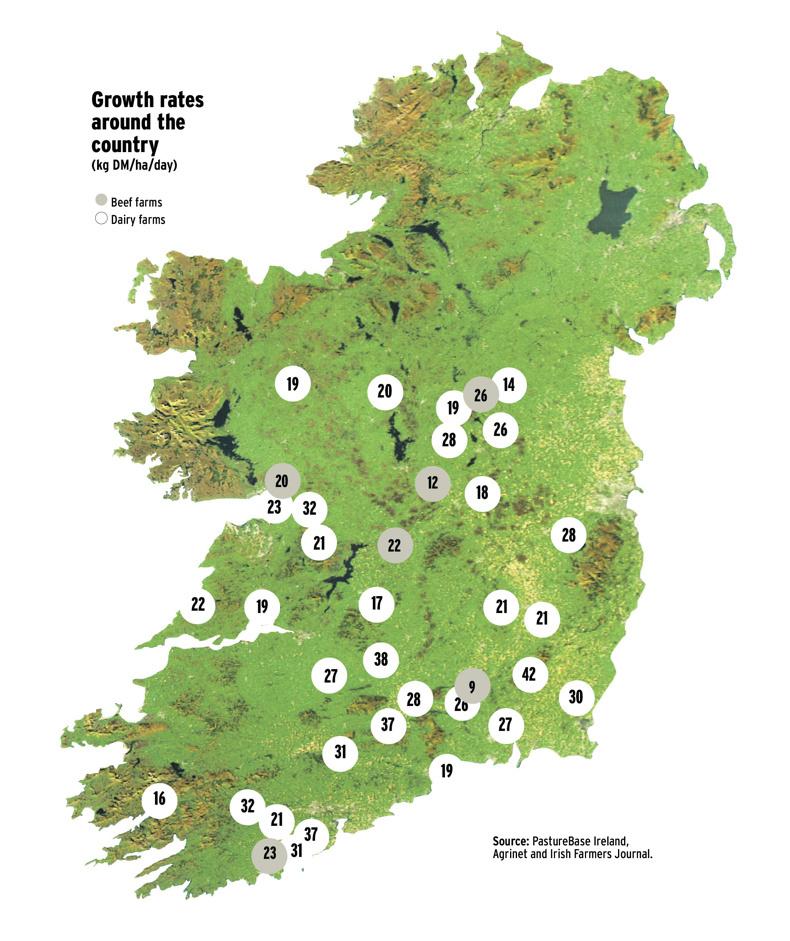
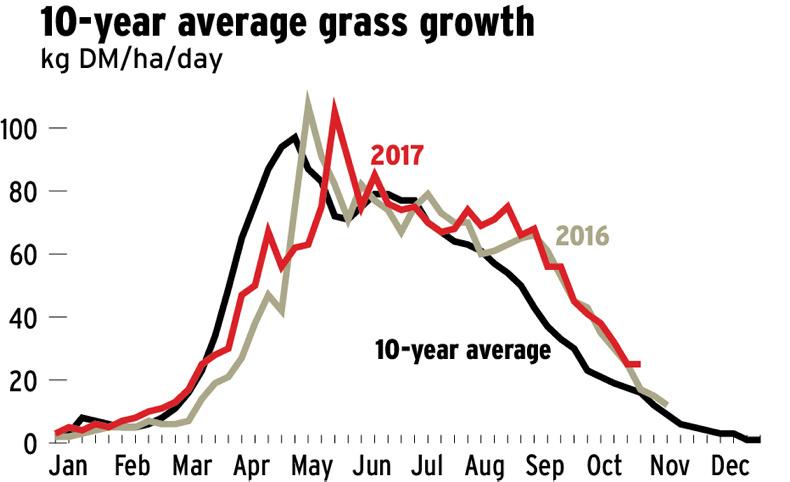





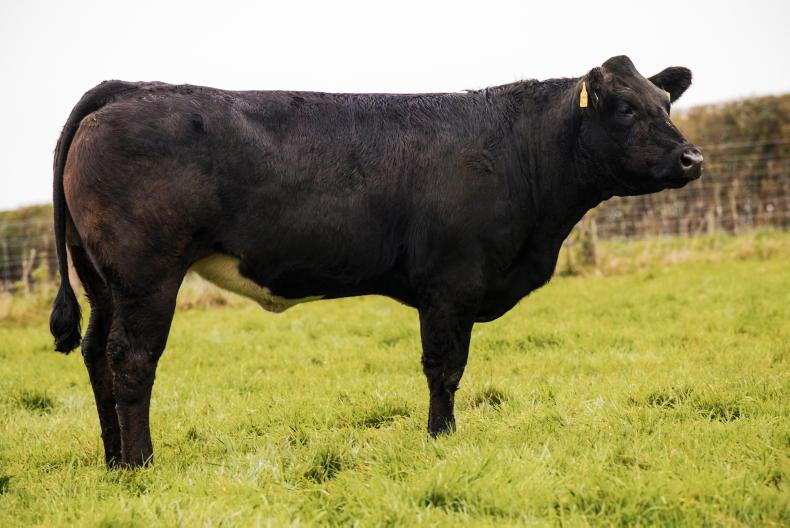

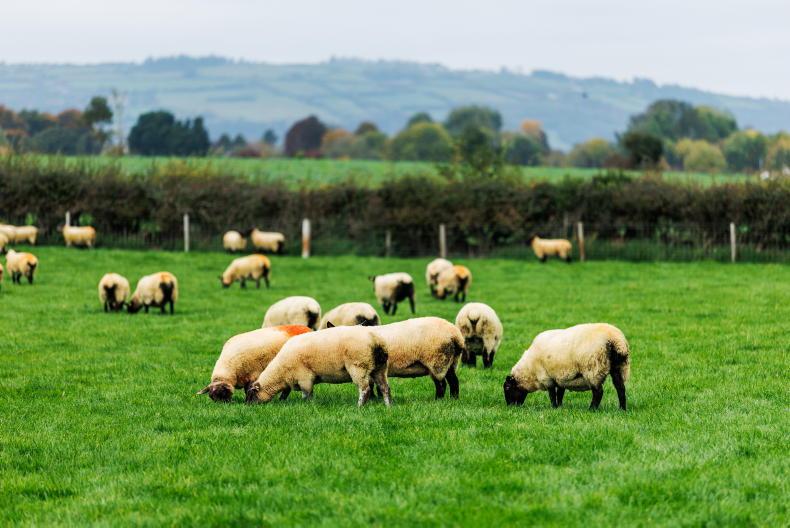
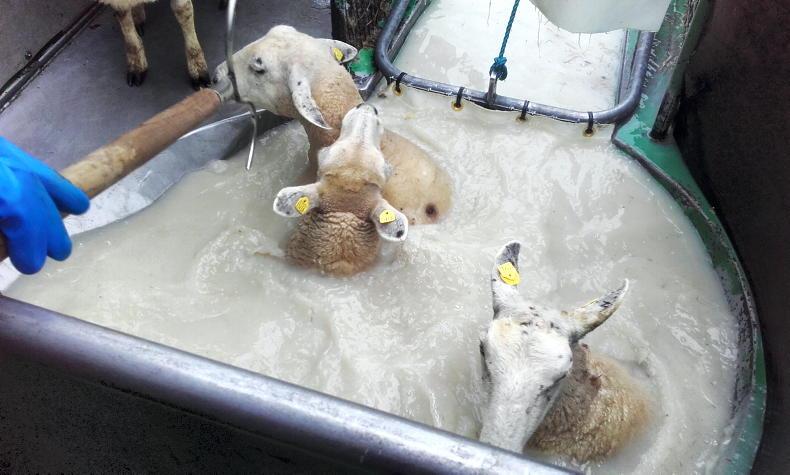
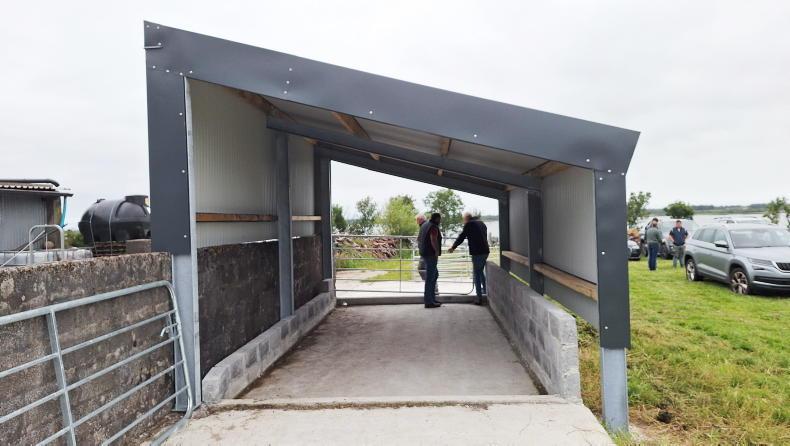
SHARING OPTIONS